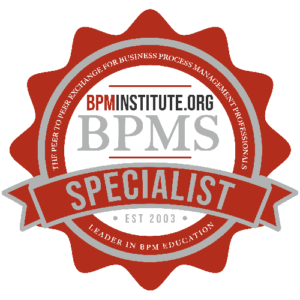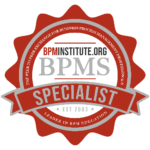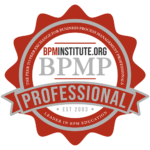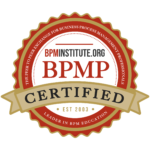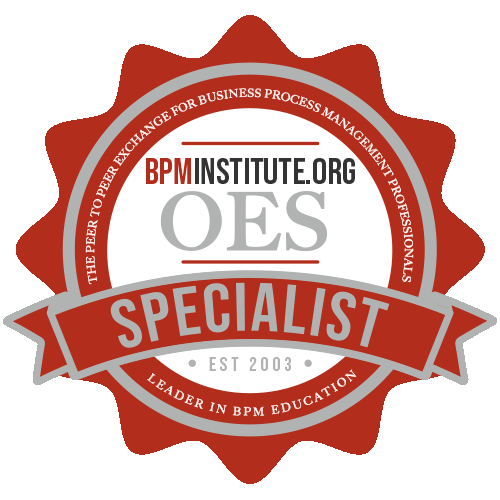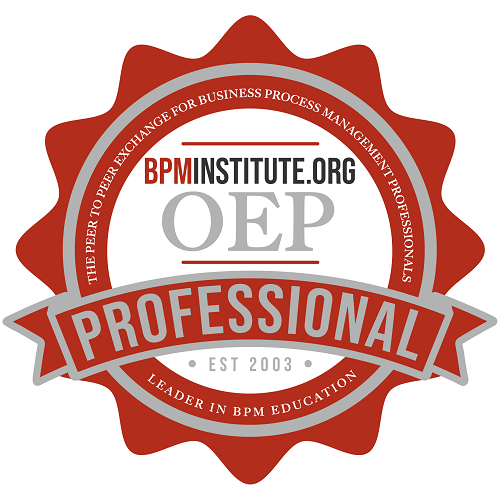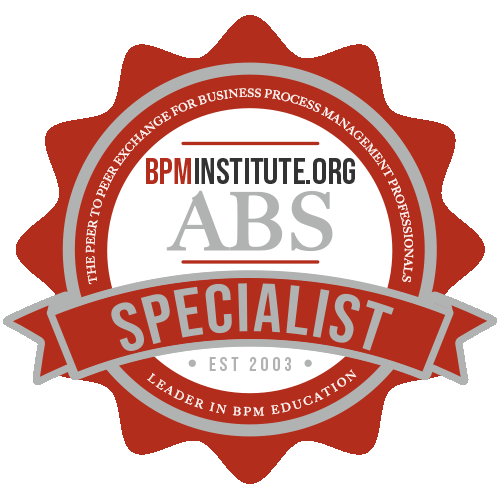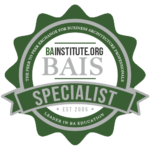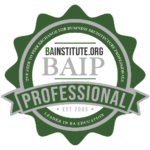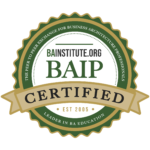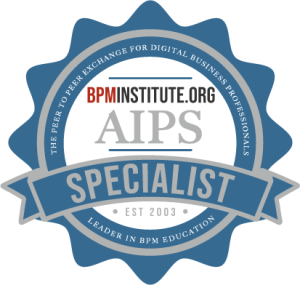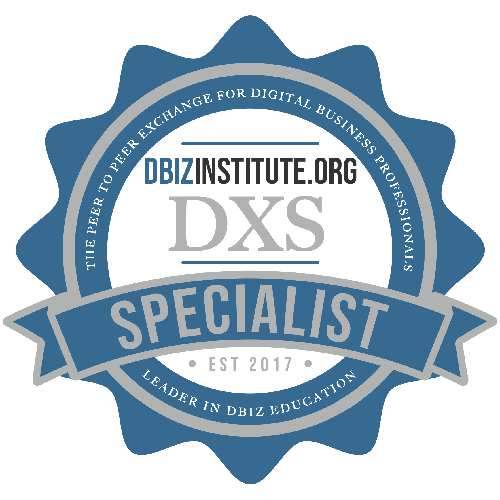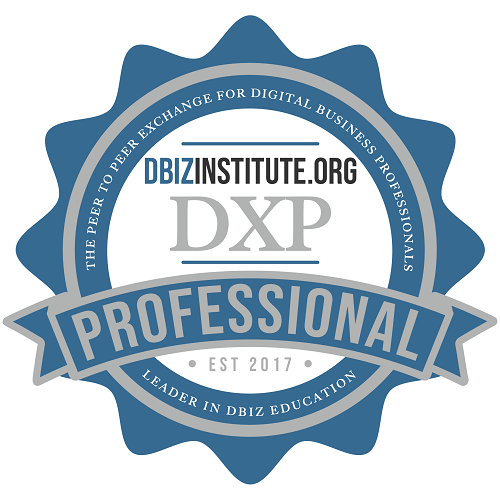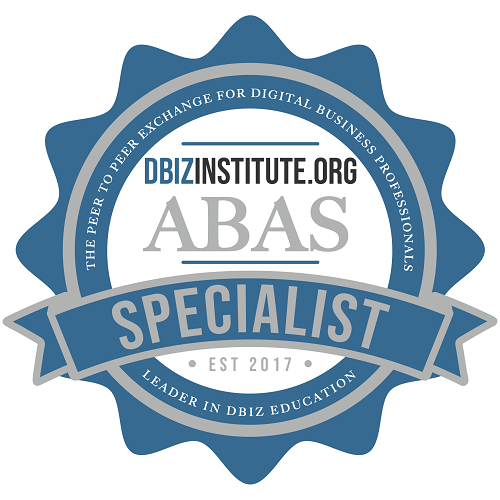Home / Resources
Resources
Discover a Wealth of BPM Knowledge and Expertise at BPMInstitute.org!
BPM Best Practices – Increasing Your Odds of Success
Remember all the hype given the things that were going to revolutionize IT and integrate everything? They never fulfilled their promise. There is good reason to think that BPM is not in the same category. The new integrated BPM suites really do work across the organization and the results companies are seeing are substantial.
Vollmer is a principal analyst in Forrester’s Enterprise Applications research group.

Retooling Legacy Systems to Meet Business Process Retooling Requirements
Business analysts continue to streamline and consolidate business processes to stay competitive and lower costs. As this occurs, entrenched application systems can impede these efforts. To fully realize the goal of business process retooling efforts, organizations may need to retool the legacy applications and data structures supporting those processes.
Case Study: Business Process Excellence – Building a Culture of Excellence
Coors Brewing Company started their BPM initiative with a top-down approach that supported the company’s strategic goals and vision. The goal is to institutionalize process excellence using a common BPM language and process models for the entire organization.
Debra Boykin is a Sr. Business Architect at Coors Brewing Company. She has over 25 years of experience specializing in the area of business architecture development.
Case Study: Managing Processes across an Enterprise with BPM
Featuring: Gary Chan, Project Leader of IT, City of Walnut Creek, CA
No More Business as Usual
As the industrial age emerged, it was the marshalling of capital that reigned supreme. Capital-intensive mass production led to such success that the barons, the Carnegies, Fords and Rockefellers, are household names to this day. Then as the making of things became widespread, attracting competitors from across the globe, capital-enabled mass production was no longer sufficient. Market differentiation became the magic sauce of success. Manufacturers began to segment markets and add features to their products to appeal to those market segments.

Ready, Fire, Aim
OK – so you’re ready to deploy BPM for improved performance. Maybe you’ve even identified a candidate business process where the application of BPM principles, practices and technology is likely to yield business benefit.
So what should you do if you want to optimize your chances of success? First of all, in spite of what some might say, don’t start with technology! Starting with technology is most likely to result in the situation ‘Ready, Fire, Aim.
Sure – technology is the key enabler – but it is just that – an enabler.
The Current State of BPM Technology: A Taxonomy and Strategy
Featuring: Bill Chambers, Principal Analyst, Doculabs
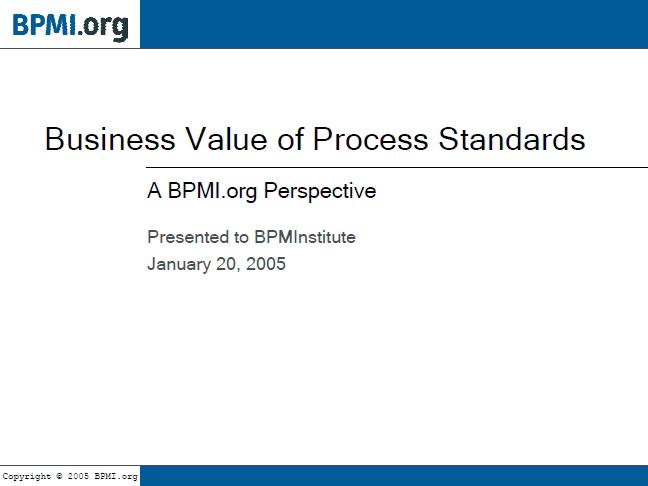
The Business Value of Process Standards
Companies of all sizes can benefit from effective business process management. Emerging BPM standards are designed to improve relationships between customers and suppliers, to identify new opportunities for organization growth and to turn value chain choreography into a competitive advantage. This presentation will cover:
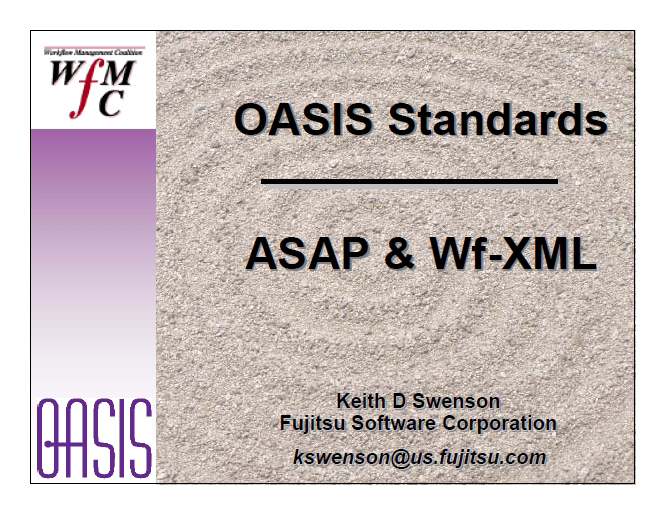
BPM Standards Update
ASAP is a web services protocol that can be used to access a generic service that might take a long time to complete – for example services that last from minutes to months in duration. The service being invoked might be fully automated, a manual task that a person performs, or any mixture of the two. This capability to handle both automated and manual activities is what makes ASAP particularly suited for B2B and intra-organizational service request scenarios.
Ask The Experts with Tom Davenport
Round Table particpants asked Tom their most pressing process questions in this Round Table “Ask The Experts with Tom Davenport”. Tom is the Renowned Author and Professor, Institute for Process Management at Babson College.
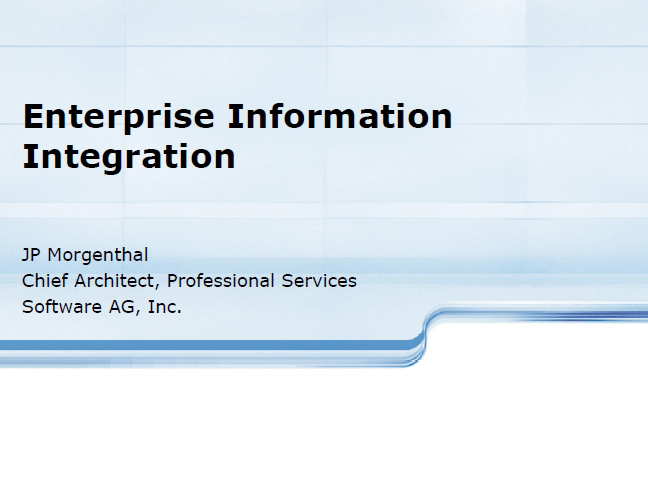
Solving the Enterprise Information Integration Puzzle
There are multiple types of integration problems. Information integration problems pertain to the class of problems where users need access to disparate data through the lens of the needs of business. This session will discuss a methodology and a case study of an approach toward information integration by associating common business vernacular with key pieces of data and processes.
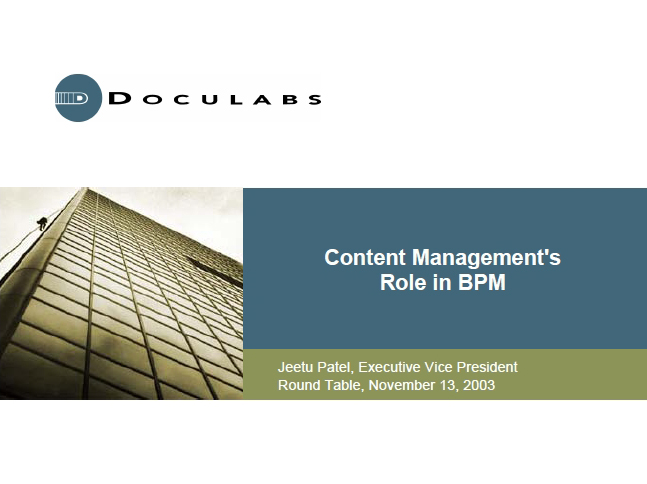
Content Management’s Role in BPM
In an effort to simplify their IT architectures and optimize systems company-wide, many businesses are standardizing on a single content- management platform for document management, Web-content management, imaging, intranet publishing, and E-mail management. Such a move requires that companies carefully consider the ways in which they organize information and how employees use documents.
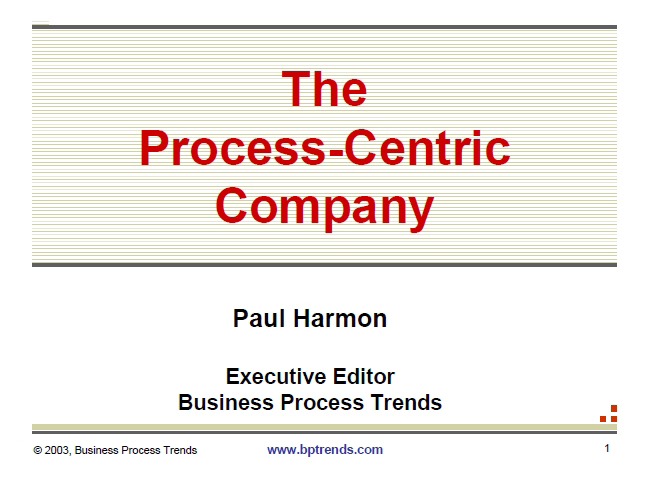
BPM Hits the Boardroom
Round Table particpants asked William Ulrich their most pressing questions in this Round Table “BPM Hits The Boardroom”. Paul Harmon discusses “The Process Centric Company” and Bruce Silver discusses “BPM 2.0: Process without Programming”. The Round Table closed with Q&A from audience.
AGENDA & PARTICIPANTS
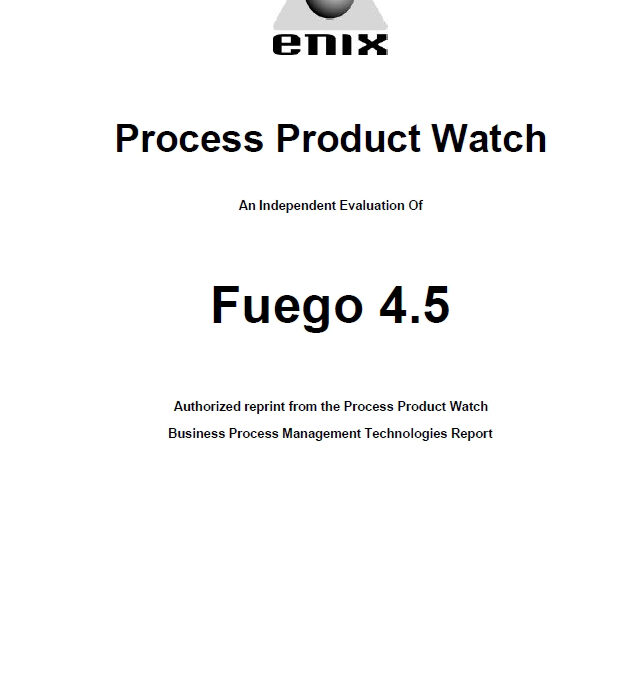
Process Product Watch: An Independent Evaluation of Fuego 4.5
Process Product Watch (PPW), as the name implies, provides its members with the results of continuous proprietary research into new tools and products that support Process Management.
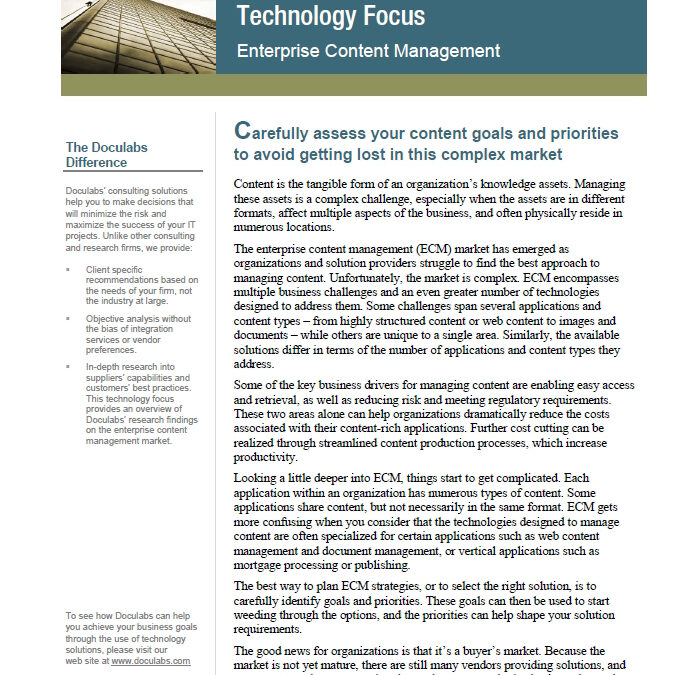
Technology Focus Report on Enterprise Content Management
Content is the tangible form of an organization’s knowledge assets. Managing these assets is a complex challenge, especially when the assets are in different formats, affect multiple aspects of the business, and often physically reside in numerous locations.
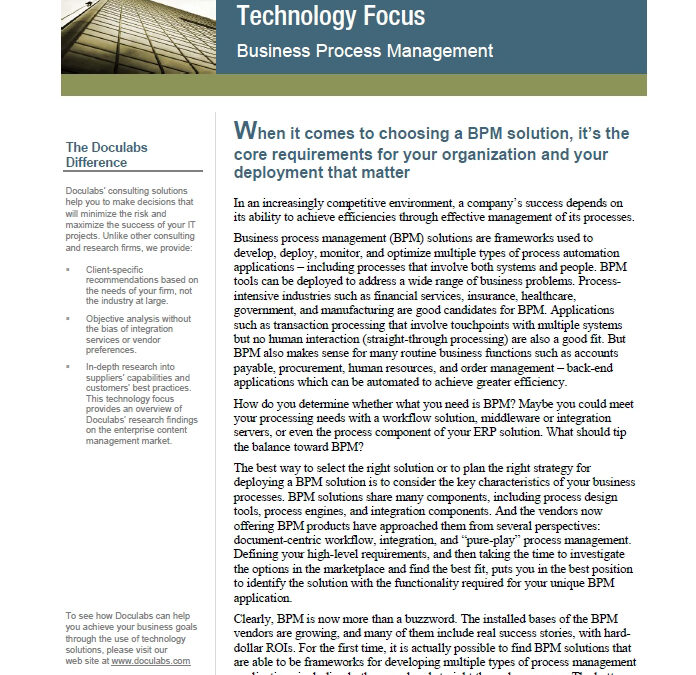
Technology Focus Report on Business Process Management
When it comes to choosing a BPM solution, it’s the core requirements for your organization and your deployment that matter
In an increasingly competitive environment, a company’s success depends on its ability to achieve efficiencies through effective management of its processes.
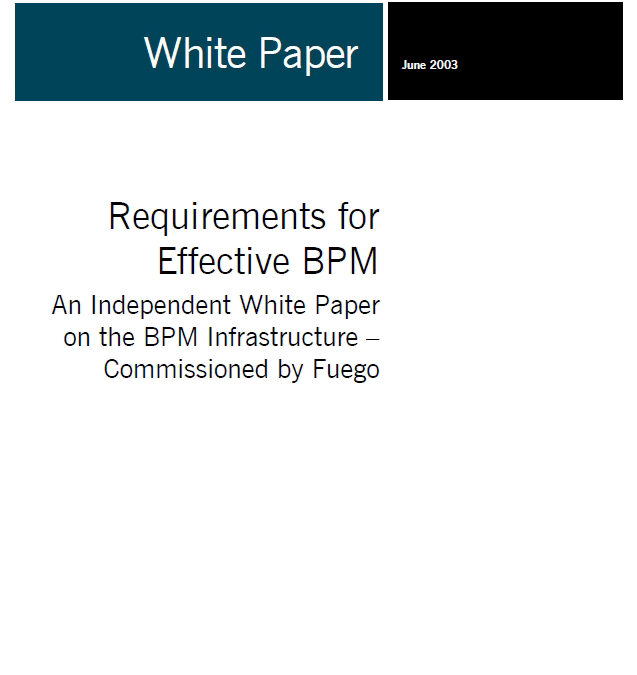
Requirements for Effective BPM – An Independent White Paper on the BPM Infrastructure
For many years there has been talk an enabler of business; how the technology infrastructure that is in place has to work towards the strategic aims of the business. The reality of IT and business is vastly different. The disparity between technology and business has been so great that no allencompassing solution has been available. Within certain defined areas, technology has helped reduce costs, although some might argue that the costbase has simply been shifted, but technology as a total enabler has still fallen far short of expectations.
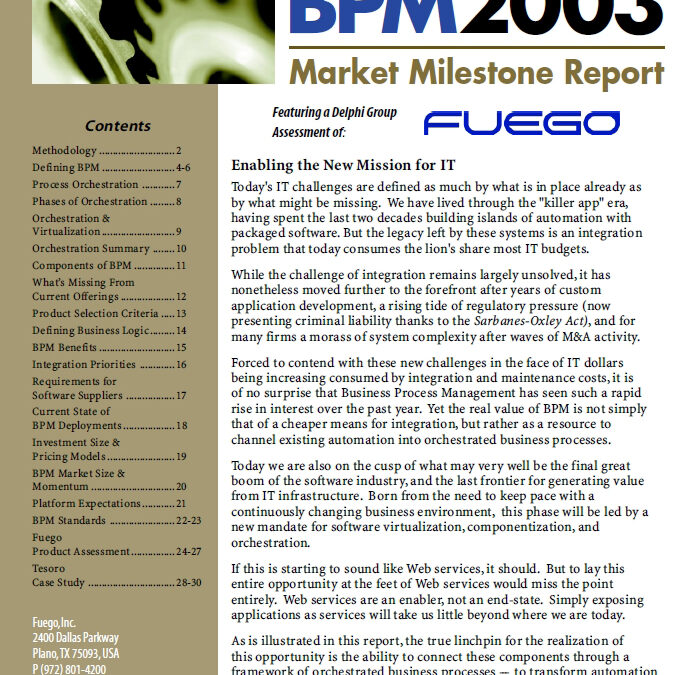
Delphi Group 2003 BPM Market Milestone Report
Today’s IT challenges are defined as much by what is in place already as by what might be missing. We have lived through the “killer app” era, having spent the last two decades building islands of automation with packaged software. But the legacy left by these systems is an integration problem that today consumes the lion’s share most IT budgets.
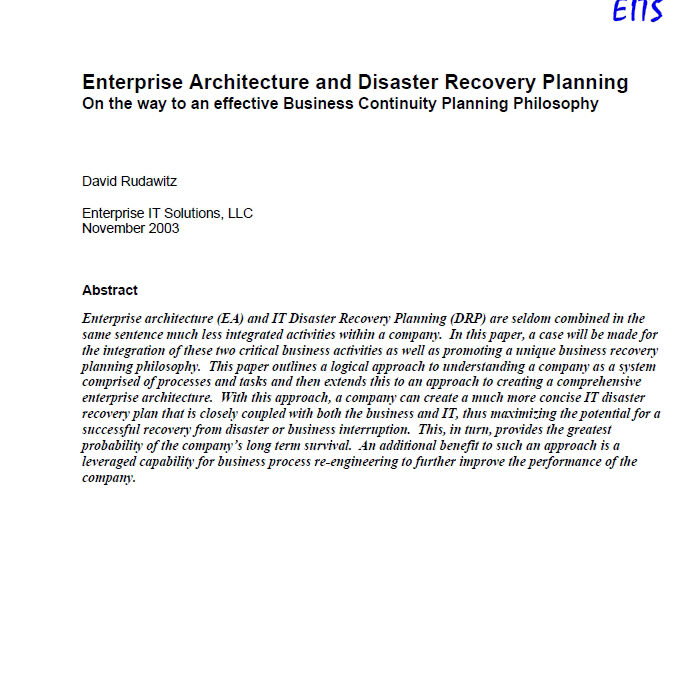
Enterprise Architecture and Disaster Recovery Planning On the way to an effective Business Continuity Planning Philosophy
Enterprise architecture (EA) and IT Disaster Recovery Planning (DRP) are seldom combined in the same sentence much less integrated activities within a company. In this paper, a case will be made for the integration of these two critical business activities as well as promoting a unique business recovery planning philosophy. This paper outlines a logical approach to understanding a company as a system comprised of processes and tasks and then extends this to an approach to creating a comprehensive enterprise architecture.
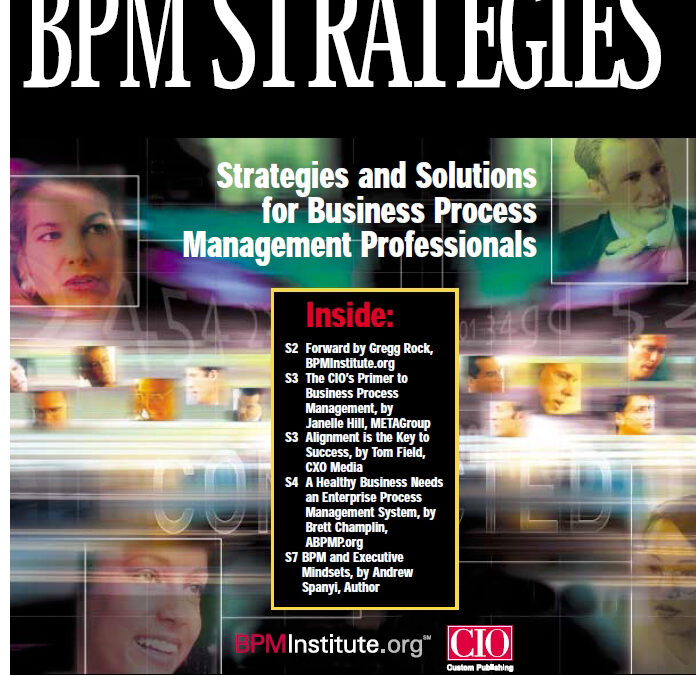
BPM Strategies Magazine Supplement
This publication will serve as the voice of the BPM Community and is designed specifically for business and IT leaders charged with leading their organization’s process innovation efforts. Additionally, BPM Strategies will facilitate the development of an accepted Business Process vocabulary to be utilized by organizations at large.
